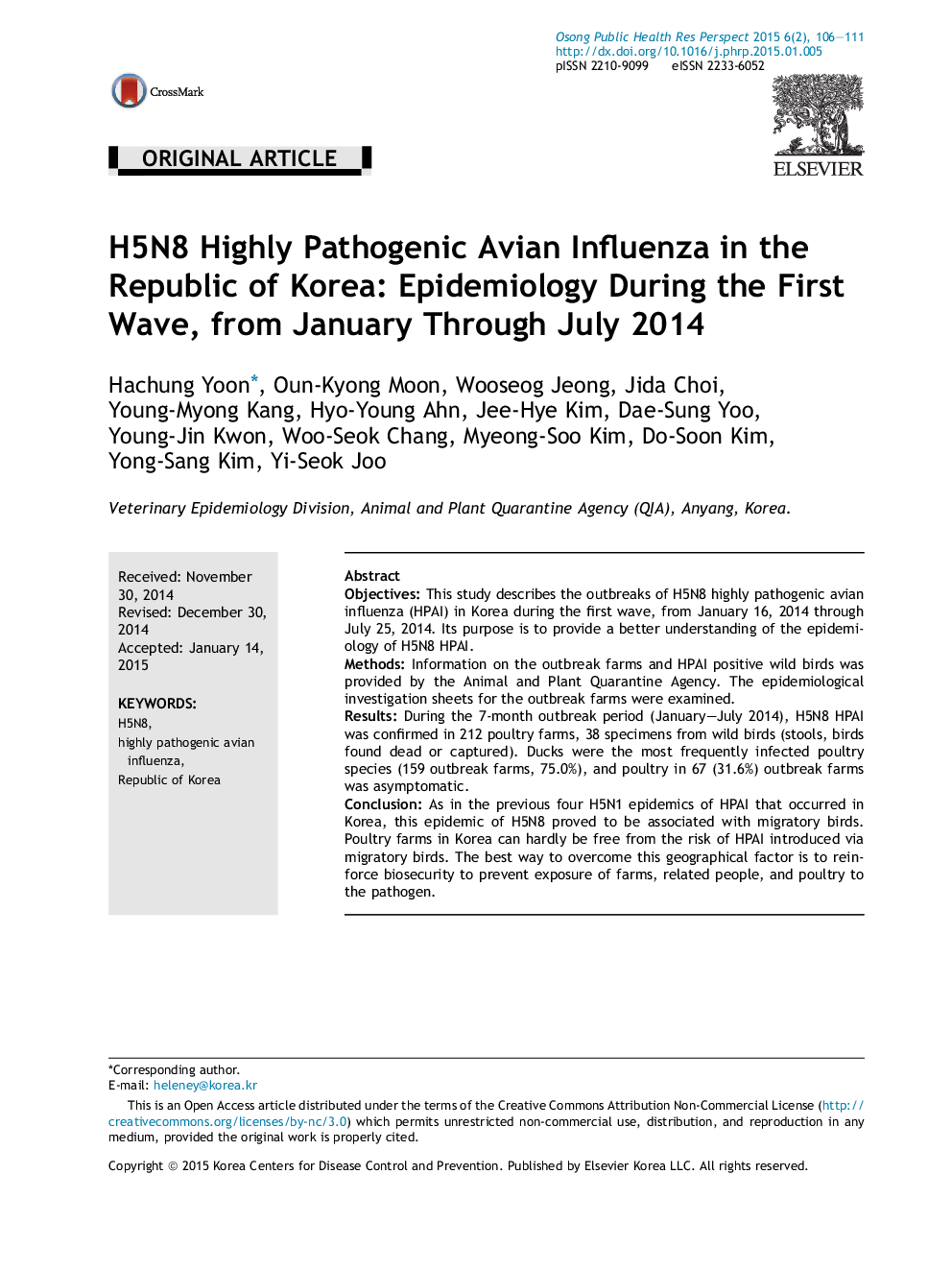| Article ID | Journal | Published Year | Pages | File Type |
|---|---|---|---|---|
| 4201993 | Osong Public Health and Research Perspectives | 2015 | 6 Pages |
ObjectivesThis study describes the outbreaks of H5N8 highly pathogenic avian influenza (HPAI) in Korea during the first wave, from January 16, 2014 through July 25, 2014. Its purpose is to provide a better understanding of the epidemiology of H5N8 HPAI.MethodsInformation on the outbreak farms and HPAI positive wild birds was provided by the Animal and Plant Quarantine Agency. The epidemiological investigation sheets for the outbreak farms were examined.ResultsDuring the 7-month outbreak period (January–July 2014), H5N8 HPAI was confirmed in 212 poultry farms, 38 specimens from wild birds (stools, birds found dead or captured). Ducks were the most frequently infected poultry species (159 outbreak farms, 75.0%), and poultry in 67 (31.6%) outbreak farms was asymptomatic.ConclusionAs in the previous four H5N1 epidemics of HPAI that occurred in Korea, this epidemic of H5N8 proved to be associated with migratory birds. Poultry farms in Korea can hardly be free from the risk of HPAI introduced via migratory birds. The best way to overcome this geographical factor is to reinforce biosecurity to prevent exposure of farms, related people, and poultry to the pathogen.
